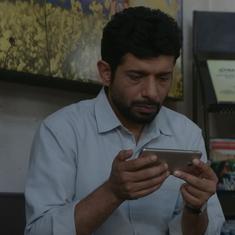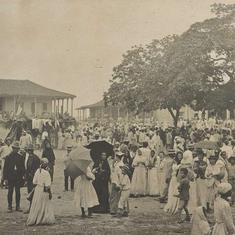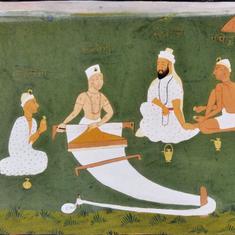Prime Minister Narendra Modi and Bharatiya Janata Party president Amit Shah have often mocked the alliances that the Opposition has forged in different states for the 2019 Lok Sabha elections. Underlying their disdain for such groupings is the fear that the regional outfits could dramatically bring down the BJP’s numbers in Parliament, and then join hands to form a coalition government, with the Congress leading it or supporting it from outside.
By ridiculing the Opposition alliances, both Modi and Shah perhaps hope to revive memories about past coalition governments that collapsed before completing their five-year terms. They possibly think this could persuade people to support the BJP for political stability in the upcoming elections.
The irony is that but for one exception, all coalition governments unravelled because of the national parties, whether the BJP or Congress. The only exception was the All India Anna Dravida Munnetra Kazhagam’s withdrawal of support to Prime Minister Atal Bihari Vajpayee, who failed the test of majority in the Lok Sabha in 1999.
The dual membership issue
There have been seven instances when prime ministers in India resigned because they lost the majority they commanded. None of their names are as deeply inscribed in public memory as that of Morarji Desai and Charan Singh. These two leaders who were brought to their knees in 1979-1980 because of relentless squabbles in their Janata Party.
In hindsight, however, it is simplistic to only ascribe the Janata Party’s collapse to the overweening ambition of its leaders. At the root of its crisis was the issue of dual membership, a term coined to describe Janata Party legislators who were also members of the Rashtriya Swayamsevak Sangh.
The dual membership was of particular significance for the Janata Party as it had been constituted through the merger of several political entities. The Janata Party consisted of the Congress (Organisation), the group from whom Prime Minister Indira Gandhi and her supporters broke away in 1969; the Congress for Democracy led by Jagjivan Ram and Hemvati Nandan Bahuguna; the Bharatiya Jan Sangh, which was renamed the Bharatiya Janata Party in 1980; Charan Singh’s Bharatiya Lok Dal, and an assortment of socialists.
At the Janata Party’s inception, all its constituents agreed to erase their distinctive personalities to make the new party cohesive. However, once the party came to power in the post-Emergency 1977 elections, Jan Sangh members stonewalled persistent demands to snap their ties with the RSS.
In his fly-on-the-wall account, Janata Party Experiment: An Insider’s Account of Opposition Politics – 1977-1980, Volume II, the late socialist leader Madhu Limaye shows how the RSS played one constituent against the other in the hope of capturing the Janata Party. Its gameplan began to unfold months after Morarji Desai, who belonged to the Congress (Organisation), became prime minister.
The Jan Sangh had the most formidable organisation among all the Janata Party’s constituents. But the biggest mass leader in the party was undoubtedly the Lok Dal’s Charan Singh. Aligned with him were Bihar Chief Minister Karpoori Thakur, Haryana Chief Minister Devi Lal, Uttar Pradesh Chief Minister Ram Naresh Yadav, and socialist leader Raj Narain, who had trounced Indira Gandhi in the 1977 elections. The support of these leaders enhanced Singh’s clout.
Initially, there was an informal alliance between the Jan Sangh and the Lok Dal factions. The Jan Sangh had bagged the post of chief minister and a dominant share in power in Madhya Pradesh, Himachal Pradesh and Rajasthan. In turn, it accepted the Lok Dal’s sway over Uttar Pradesh, Bihar and Haryana.
There was also a caste dimension to the informal alignment in the Janata Party. Most of those who had a Congress past belonged to the upper castes. They were contemptuous of backward caste chief ministers such as Lal, Thakur and Yadav and sought to fan dissidence against them.
The Jan Sangh, too, had an upper caste leadership structure. “[But] the Jan Sanghis had, for practical reasons, made common cause with their bête noir – the BLD [Bharatiya Lok Dal],” writes Limaye.
But after strengthening its tentative grip over Madhya Pradesh and Himachal Pradesh, Limaye says the Jan Sangh took to challenging the Lok Dal and socialists. Its opportunity came when Thakur, in March 1978, decided to introduce 26% reservation for the Other Backward Classes in Bihar.
Limaye writes, “The Jan Sangh…was upper caste…The ABVP [Akhil Bharatiya Vidyarthi Parishad, the students’ wing of the RSS] people of course quite openly participated in the anti-reservation stir.” The upper castes were out in the streets to protest. Ultimately, a compromise scheme promised, among other things, reservation to the economically poor.
The 10% quota introduced in January by the Modi government therefore has a long history.

Janata Party’s internal politics
At the Centre, the Jan Sangh took to siding with Desai, who felt emboldened to assert himself against Charan Singh and Raj Narain. Citing specious reasons, Desai got the duo to resign on June 30, 1978.
But harmony still eluded the Janata Party. For one, Singh took to publicly accusing Desai’s son, Kanti Desai, of corruption. For the other, Singh organised a massive kisan rally in Delhi on December 23, 1978. It conveyed that he could be sidelined only to the party’s detriment.
Morarji Desai thought it prudent to re-induct Singh into the Cabinet on January 24, 1979. On the same day, though, Uttar Pradesh Chief Minister Yadav dropped four junior ministers from his ministry. Two them belonged to the Jan Sangh, which raised a furore. Yadav lost the confidence vote he was asked to seek from party MLAs.
The war in the Janata Party was now out in the open. Limaye writes, “Charan Singh himself now launched a scathing attack on the RSS. He described it as a fascist organisation. He had been against admission of people with RSS connections into the party. His two years’ experience had convinced him that his original view was correct.”
The Sangh’s bid to capture Uttar Pradesh was thwarted as Singh aligned with the Congress for Democracy party to get Banarsi Das elected as chief minister in February 1979. Das then upped the ante by saying that he would not include in his ministry those who attended RSS camps.
To allay the fears regarding dual membership, RSS chief Balasaheb Deoras addressed a big rally in Delhi on March 4. He harped on the non-political character of the RSS.
As a counter, the socialists made public an affidavit that the RSS had submitted to a Nagpur court on March 6, 1978. The affidavit said that the “RSS propagated a distinct political philosophy…that India was and is a Hindu Rashtra.” It also said that though the RSS was not a political party, it could change its policy in the future to participate in “even day to day political activity”. This affidavit gave a new meaning to the RSS-Jan Sangh links.
As Uttar Pradesh seemed to careen out of control, Union Minister Biju Patnaik met Deoras on March 11. Patnaik suggested that the RSS could on its own dissociate itself from the Janata Party and merge its mass organisations with the party’s other fronts. Patnaik’s suggestions were rejected.
Limaye writes, “Biju’s efforts were ill-conceived. The RSS was determined to pursue its set objective. If it had desired to change its outlook the most propitious time was the middle of 1977.”
Nevertheless, a group of 24 Janata Party leaders met on April 2 to resolve the dual membership issue. Vajpayee, who was foreign minister at that time, claimed the matter had been closed with the Janata Party’s formation. Others reminded him that the dual membership issue had been persistently raised ever since it was discussed at the meeting held after Desai took oath as prime minister. Yet there had been no decision on it, neither from Desai nor the Jan Sangh.
In mid-April, 109 people died in a communal riot in Jamshedpur in Bihar. The Janata Party’s inquiry panel named the RSS among the principal culprits. The violence led to Ram Sundar Das replacing Thakur in Bihar and Bhajan Lal taking over from Devi Lal in Haryana. Raj Narain was removed from the party’s national executive. The socialists and the Lok Dal were under attack from the combine of Desai’s followers and the Jan Sangh.
The irrepressible Raj Narain hit back. On June 6, he asked the Lok Sabha Speaker to allot him a seat separate from the treasury benches. Three days later, he floated the Janata Party (Secular) to distinguish it from what Limaye calls the RSS-friendly Janata Party. It began to draw more and more MPs with every passing day. The Janata Party was palpably crumbling, but the minutiae of saving it continued for another month.
On July 11, a no-confidence motion was moved against Prime Minister Desai, who resigned. Over subsequent weeks, Charan Singh secured the support of Indira Gandhi’s Congress to become prime minister. But on August 20, 1979, even before he faced the Lok Sabha, the Congress withdrew support.
The collapse of the Janata Party was to become the opening chapter in the methods the Congress and the Bharatiya Janata Party – the new name given to the Bharatiya Jan Sangh in 1980 – were to adopt to pull down coalition governments in the future.
This is the first part of a two-part series. Read the second part:
What is common to Morarji Desai, Charan Singh, VP Singh, Chandra Shekhar, Deve Gowda, Inder Gujral?










